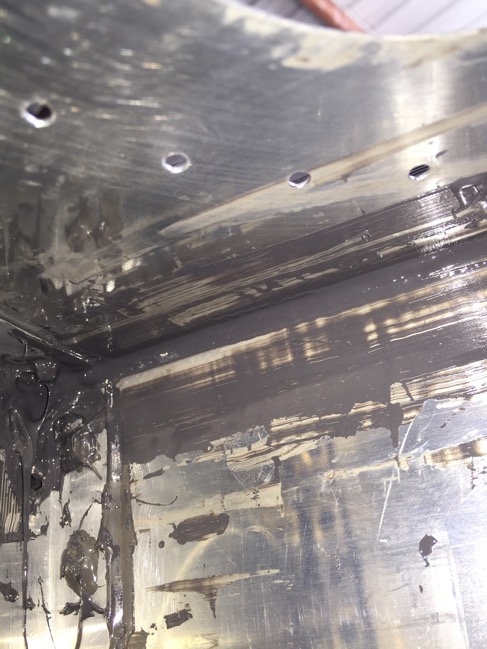This post encompasses several projects over three sessions in the hangar. First up I needed to figure out a way to mount the tail of the fuselage to my rotisserie stand. The axis of rotation is offset from the center of the tail. There are a couple of options for how to mount. I decided to make a padded cradle for the tail. I wrapped a cotton towel around the tail with duct tape. Then I clamped some 2x4s around very tightly to get accurate measurements. A short while later I produced this: 
I didn’t take a good picture of the front mount in my previous session, so here is that. 
And here is the final product for the tail mount. You can see how the center of rotation is offset and how I padded the tail in the cradle. The entire stand is sturdy, but it still makes me nervous. Especially while in the rotated position, its hard to tell how much of a torquing moment may be applied to the engine mount connections or any part of the frame. To protect against any mishaps I will continue to use the adjustable saw horses underneath. Additionally, I have a friend who is giving me an adjustable motorcycle stand. I am going to use that to create a center support that can be adjusted for any position near the center of gravity.


Here is the Hangar 51 mascot showing off his handywork.
That’s not a blue bow. Its poop bags. Keeping it classy. 
Next up, it was time to attach and torque the non-leaking tank to the wing. The screws get between 12 and 15 inch pounds of torque. I used torque seal to mark the bolts that were attached to the z-brackets. 

A trick I learned a little while ago that is seriously awesome; use a small dab of valve grinding compound on the tip of a your philips head screwdriver to avoid “caming” out of the screw head. Works wonderfully. 
I borrowed Mike Bullock’s screw driver click type torque wrench thing-a-majig. Works well.

I double checked that it work with my inch-pound bicycle torque wrench and a philips socket.


Squire enjoyed sunbathing. It was a gorgeous Sunday. 
I also drilled the second line that will hold either the AOA line or the pitot line. I still have two ribs remaining. The two interior ribs to the wing walk doubler are rather difficult to get at. I stopped at Lowe’s on the way home and hopefully I have a solution. 
My final project for the weekend was to complete the wing access panels. First I mounted the skins on the wings and match drilled. Then I deburred and dimpled. Then I used a technique that I only just learned. Instead of using standard AN426AD3-3.5 rivets which require dimpling both the skin and the nut plate I used NAS1097 Oops rivets with the reduced sized machine heads. These only require a small countersink that you can do with your demurring tool in a few extra passes. Not only is it much quicker, but I think it results in a cleaner and more properly aligned product. There is no reduction in strength either. The nut plates bear the load… the rivets just hold the nut plates in place to prevent rotation.
You can see the results here:
And the final products. 

39.3703819-76.9663122


































